wow888 Sagibu: Landless farmers get taste of owning land
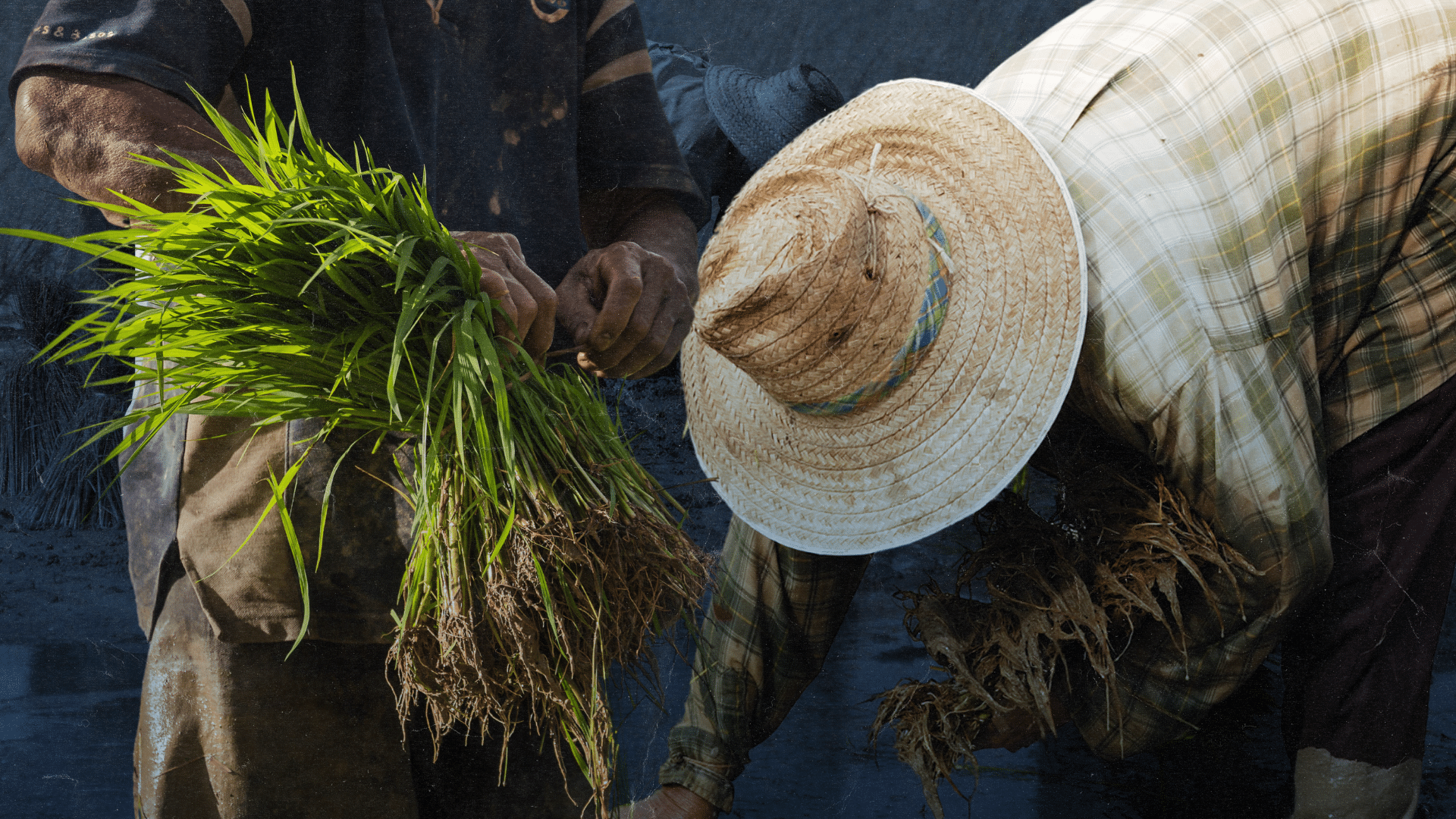

FARMING composite image from Inquirer file/stock photos
MANILA, Philippines—There are 2.4 million rice farmers in the Philippines, but only over 50 percent have their own land, the Philippine Rice Research Institute (PhilRice) said.
As of 2023, 4.82 million hectares are tilled for rice production all over the country, but based on 2016 government data, 30 percent of farmers in the Philippines are mere tenants on land owned by someone else.
Article continues after this advertisement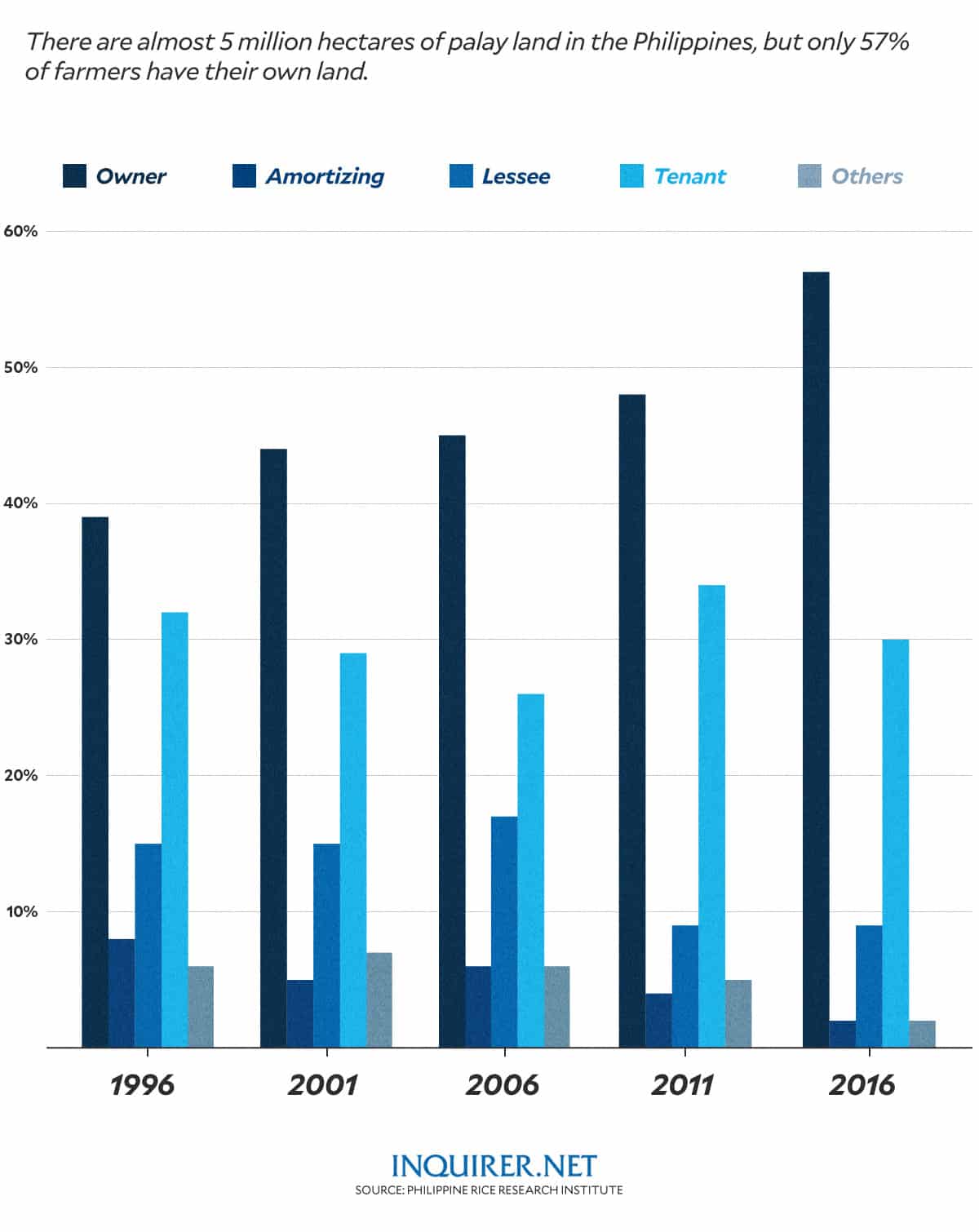

GRAPHIC: Ed Lustan/INQUIRER.net
Republic Act 4054, or the Philippine Rice Share Tenancy Act, provides that these tenants, most of them landless, work as farmers who till palay land in exchange for a share of the harvest.
FEATURED STORIES NEWSINFO VP Sara fires back, tags Marcoses in Ninoy assassination NEWSINFO Four OVP execs cited for contempt show up at House hearing NEWSINFO Sara backtracks on remarks vs MarcosRELATED STORY: Govt’s willful neglect of consumers and farmers continues!
Magno Gregorio, 63, explained to INQUIRER.net that as a tenant, he is given 12 percent of the harvest, so if a hectare yields 100 cavans of palay, he would bring home 12 cavans, or 600 kilograms.
Article continues after this advertisement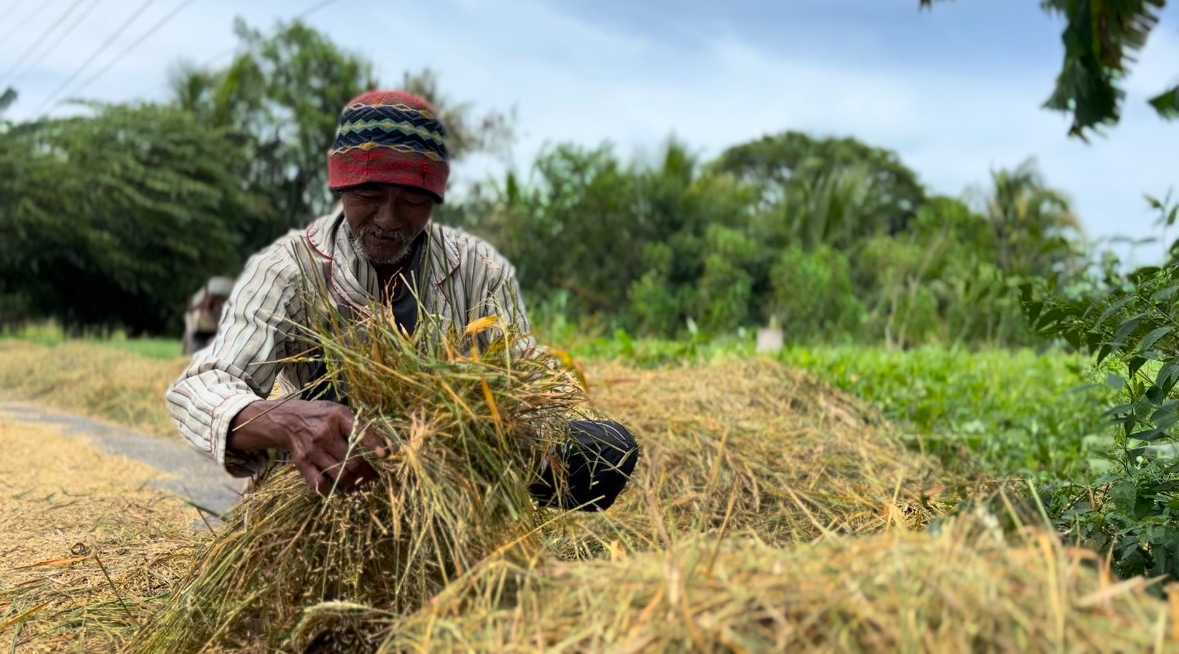

Magno Gregorio, 63, harvests by hand the palay yields from last month’s sagibu. PHOTO COURTESY OF KURT DELA PEÑA/INQUIRER.net
A tenant himself, Gregorio is tilling five hectares in Isabela province. He said that every harvest, each hectare produces 100 cavans, so as a result, he is given 60. The rest, or 440 cavans, is left to the landowner.
Article continues after this advertisementWith 60 cavans, or 3,000 kilograms, Gregorio would get P59,640, as PhilRice said that in 2023, dry palay was worth P19.88 per kilo. But while almost P60,000 may seem a lot, Gregorio shatters the myth.
Article continues after this advertisement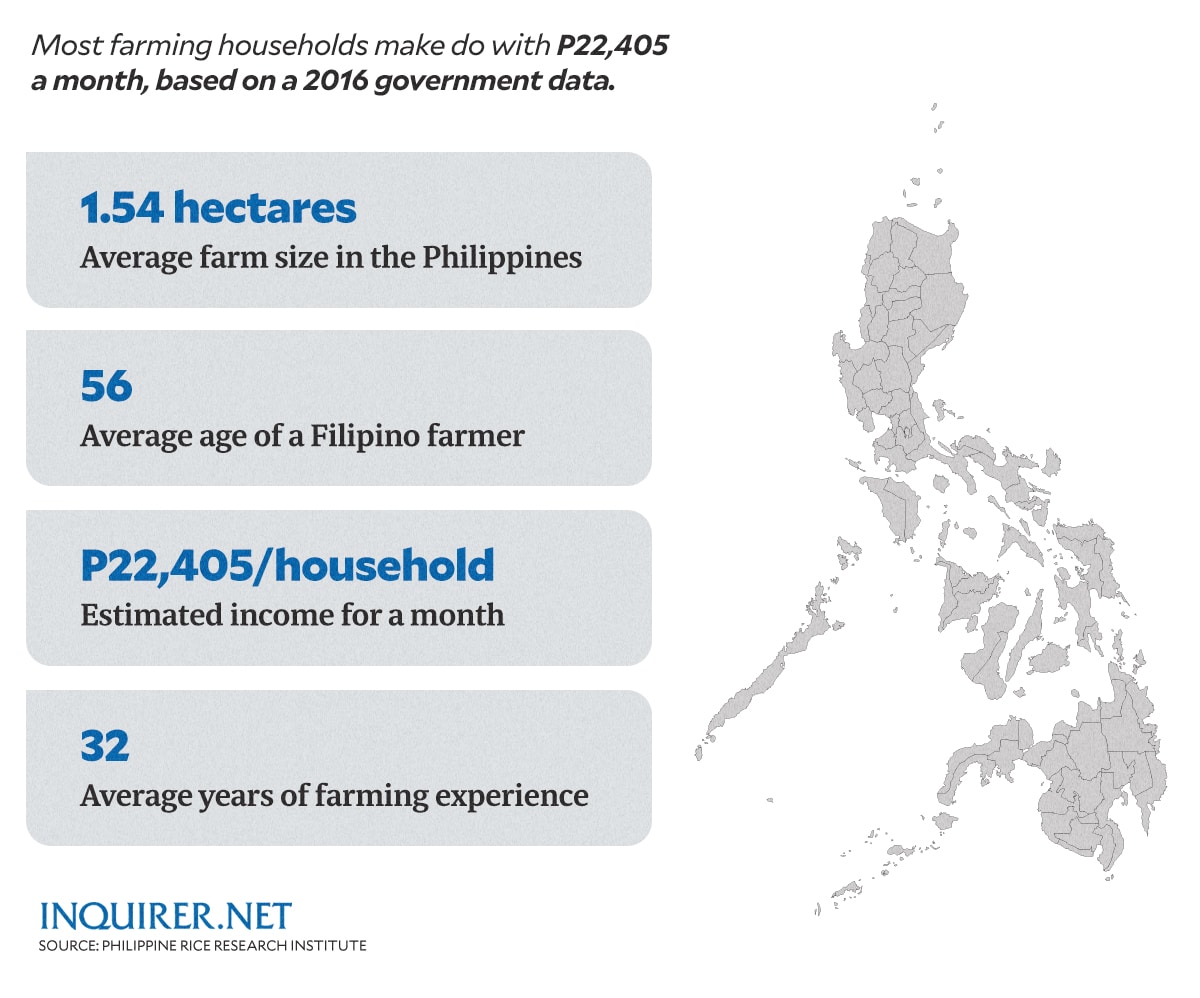

GRAPHIC: Ed Lustan/INQUIRER.net
Based on government data, the poverty threshold for farming households was set at P9,064 in 2015. Almost 70 percent was out of poverty in 2016 as the average income was set at P22,405 a month.
However, Gregorio said it is not always the case.
Article continues after this advertisementGregorio, who has been tilling land since he was 15 years old, said that he has to make do with P59,640 for 120 days, or a little less than P497 a day, for most of his nine grandchildren.
‘Ours’PhilRice said that in 1996, only 39 percent of farmers had their own land. This eventually grew to 44 percent in 2001, 45 percent in 2006, 48 percent in 2011, and 57 percent in 2016.
While some started tilling their own land, the number of landless farmers working in exchange for a share of the harvest grew, too: 32 percent in 1996, 29 percent in 2001, 26 percent in 2006, 34 percent in 2011, and 30 percent in 2016.
RELATED STORY: Day of the Landless: The failed promises of land reform in PH
Every year, however, landless Gregorio experiences how it is like to own a land as he explained that after harvest, palay stalks grow back and yield rice grains: “Daytoy diay sagibu (This is what we call sagibu).”
According to a previous report in science.org, all rice is perennial to some extent, so “rice roots sprout new stems after harvest.” The only problem is that the yield won’t be as much as the first harvest.
But as Gregorio said, whether the sagibu yields a lot, five to six cavans is already enough: “Daytoy nga masagsagibu mi, isu metten ti ipadalis mi [nga agbalin] a nayon ti panggastos mi (This second harvest is what we add to our resources).”
RELATED STORY: Tariff cut on imported rice: A gamble local farmers won’t take
He said in Ilocano that the second harvest is “all ours”. “Diay akin daga, awan bagi nan, kukuwa mi nga makiporposyento daytoy nga masagibu mi (The landowner will no longer have a share as the yield will go to the tenant).”
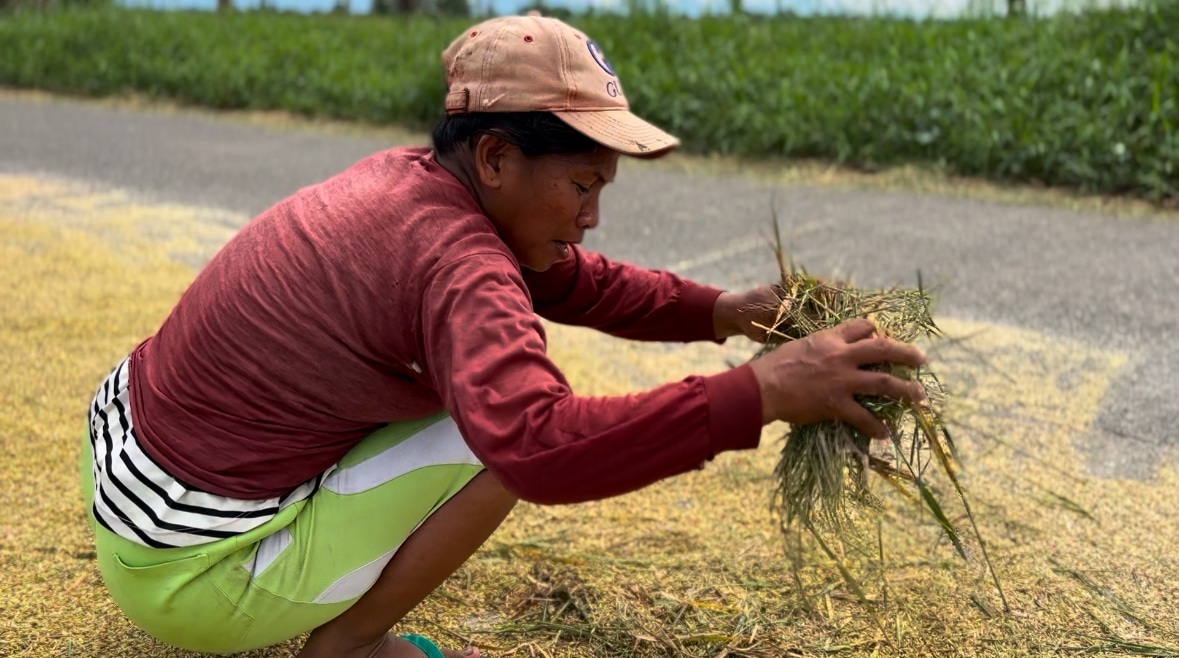

Cheryl Aguayo, 47, harvests by hand the palay yields from last month’s sagibu. PHOTO COURTESY OF KURT DELA PEÑA/INQUIRER.net
According to Cheryl Aguayo, 47, who is tilling almost five hectares, two to five cavans are already a lot, saying that they depend on the sagibu for their rice consumption for 120 days.
“Isu met ti libre nga makan (This one has no cost),” she told INQUIRER.net.
Gov’t neglectAccording to government data, most farming households have rice as their main source of income—80 percent in 1997, 79 percent in 2001, 80 percent in 2006, 88 percent in 2011, and 83 percent in 2016.
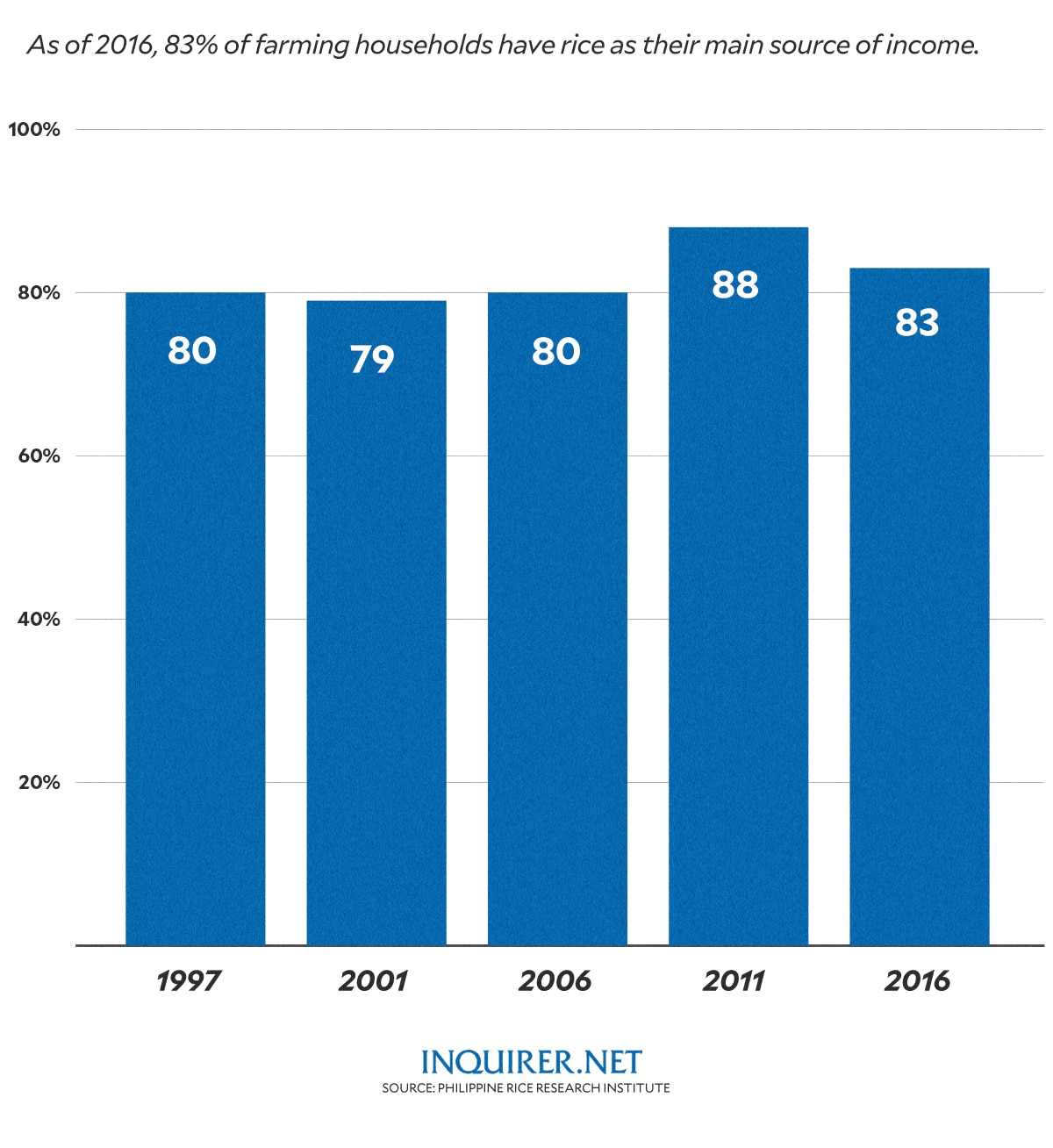

GRAPHIC: Ed Lustan/INQUIRER.net
As PhilRice said, for those who own land, the average farm size was 1.54 hectares.
The United States Agency for International Development said that land distribution in the Philippines is “skewed” as there are 4.2 million small farms that average less than 1.5 hectares and 8,475 large private landholdings of up to 25,000 hectares each.
All over the country, it said that there are 10.2 million marginal farmers and farm workers, 70 percent of whom is landless. This data does not only pertain to palay farmers.
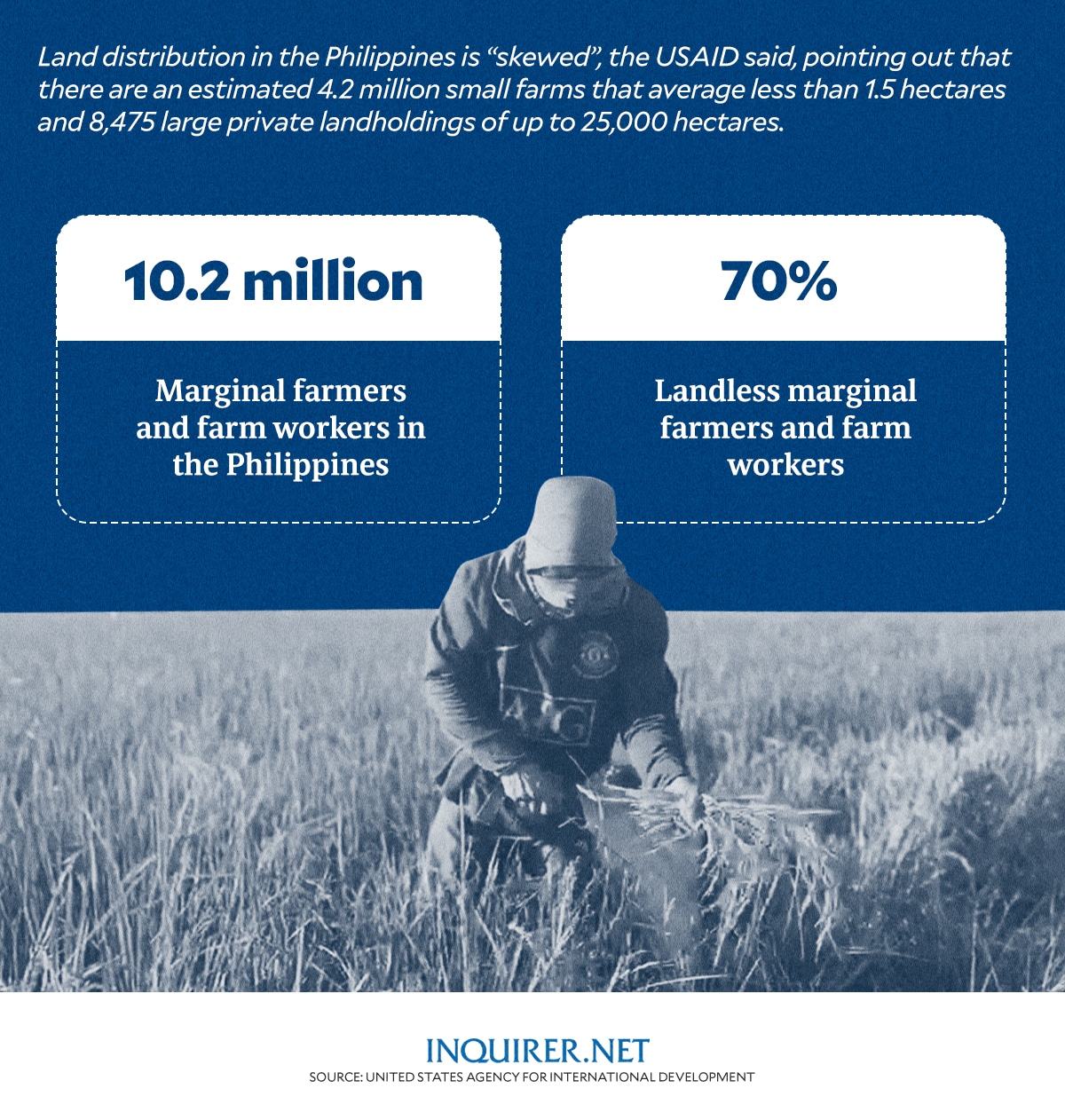

GRAPHIC: Ed Lustan/INQUIRER.net
But landlessness is not the only problem, really, as even those with land struggle with low palay price and high production cost: P19.88 against P14.98, leaving one with only P4.9 for every kilogram.
Sometimes, palay price would go down to as low as P15 to P16 because of the Rice Tariffication Act that was signed in 2019 by then President Rodrigo Duterte. The law reduced the tariff rate on imported rice to 35 percent.
RELATED STORY: Gov’t slashes tariff on rice imports to help cut local prices
With the persistent stream of imported rice, especially with Executive Order No. 62 that was signed by President Ferdinand Marcos Jr. in June, a crop science expert said that “farmers will already lose motivation to work harder to increase their yield.”
READ: Not in Sona 2024: More rice imports, impact on PH farmers
Subscribe to our daily newsletter
Teodoro Mendozawow888, a retired professor at UP Los Baños, said that at an average rice yield of 4,000 kilograms each hectare, farmgate palay price of P15 to P16 will result in an average income of -P4,100 and -P580.
READ NEXT Manila seniors clamor for Isko Moreno’s return VP Sara fires back, tags Marcoses in Ninoy assassination EDITORS' PICK Filipino craftsmanship showcased in ‘Wicked’ costume design Security officer picked by VP Duterte disbursed confidential funds Fuel price hike set on Tuesday, Nov. 26 1-Pacman party-list improves PH’s safety culture Threat against Marcos ‘maliciously taken out of context’ – VP Sara Duterte MOST READ West PH Sea: US drawing up contingency plans for Taiwan emergency – Kyodo VP Sara fires back, tags Marcoses in Ninoy assassination Security officer picked by VP Duterte disbursed confidential funds OVP exec: I left secret funds to security head as per VP Sara's order Follow @FMangosingINQ on Twitter --> View comments
